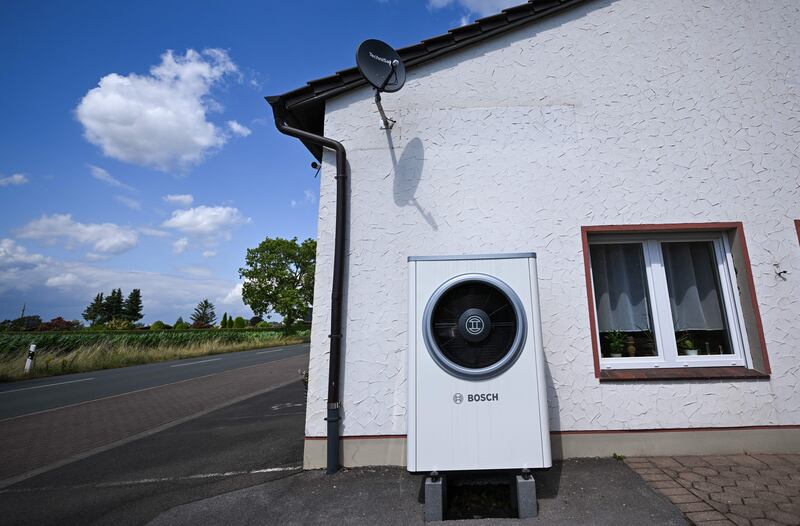Stubbornly high energy prices mean more big bills this winter. There will be another round of energy bill credits, the Government says, but these will go furthest for those in well insulated homes.
Irish households received three electricity bill credits of €200 each last winter. The payments made directly to electricity providers were set against our November, January and March bills. We’ll know more about this winter’s credits on Budget day.
What we do know now is that spending money to heat a draughty house is like pouring water into a leaking bucket. Yes, it’s madness, and so is a €600 credit towards the cost of it, but who can afford to retrofit? At a cost of about €60,000 gross, or about €35,000 with grants, it’s a lot of money.
When it comes to reasons not to carry out retrofit work, cost is the main barrier for almost two-thirds of homeowners, says a new survey by Chadwicks. Cash-strapped households accept the slow drain of money on heating bills of necessity because they cannot afford to spend thousands plugging the holes.
READ MORE
Energy credits may be a band-aid for this winter. But if you want a longer term solution to lower bills and a warmer home, it’s time to make a plan.
Low cost, fast return
There are some steps you can take right now that will reduce your energy bills this winter and won’t cost the earth. Start with a thorough assessment, says Conor Walsh of SEAI registered installer, Encon. Then pick off the SEAI grants that will give you the biggest bang for your buck.
The first step is to find a Building Energy Rating (Ber) assessor who can do an assessment to the standard of the SEAI’s One Stop Shop service, says Walsh. The One Stop Shop is for homeowners who want to do all the energy upgrades in one go to achieve a B or even an A-rated home.
There’s a stand-alone grant of €350 for the assessment. For that, you’ll get a detailed technical report and a roadmap of the upgrades needed to bring your house to maximum efficiency, along with an estimate of how much it will all cost. You don’t have to carry out the work to get the grant for the assessment.
“Get them to assess your house and tell them that the reality is ‘I can’t afford a €60,000 retrofit. What is the low-hanging fruit here? What are the things that will get me to the next level?’.”
The lowest hanging fruit for most houses is likely to be the attic, says Walsh. “The attic should be first for everyone; everyone should be getting their attic done,” he says.
Heat rises and up to 30 per cent of your home’s heat can be lost through your roof. The payback from attic insulation is instantaneous. Insulation will keep the heat in the rooms below. That means your heating probably won’t need to be on for as long and that’s going to bring down your heating bills. When your heating switches off, your house will retain the heat for longer too.
“The SEAI grant for insulating your attic is absolutely amazing. For the majority of homes, a three or four-bed semidetached home or even a detached home, you are probably getting your attic done for 30 or 40 per cent of the cost,” says Walsh.
The SEAI offers a grant for ceiling insulation of between €1,300 for a mid-terrace house to €1,500 for a detached house.
If it costs €1,800 to insulate your attic and you get €1,500 back in a grant, that’s an outlay of just €300. You are likely to recoup this in reduced energy bills in the first two years. You’ll get a warmer home instantly.
If your house has cavity walls, like many built in the 1970s, 1980s and 1990s, pumping them with insulation is another measure where generous grants and the return on investment make sense.
Up to 30 per cent of your home’s heat is lost through external walls. Insulating them will reduce this heat loss and lower your bills. Cavity wall insulation grants from the SEAI range from €800 for a midterrace to €1,700 for a detached home. Your personal outlay will be about €700 to €1000, so again, the grant is a big proportion of the overall cost. Expect to recoup the savings on energy bills in the first two to three years. You’ll get a warmer house on the day you do the work.
Medium cost, medium-term return

In terms of return on investment, solar panels are a good medium-term investment, says Walsh. VAT on solar panel installation was abolished on May 1st, cutting about €1,000 from their cost. When combined with the existing SEAI grant of up to €2,400 for home solar installations, it means the cost of solar panels could drop to about €5,600 on an average home.
A payback calculator on the SEAI.ie website of a 4kW system estimates savings of €512 a year with payback over 10 years. But that’s for a simple system, not configured to include storage technologies such as an immersion diverter for storing hot water, or a battery. It also does not include any benefit from selling power back to the grid for which you will need a smart meter.
“With the VAT gone off solar panels now and the cost of electricity, the majority of homes that install a 4kW system will probably have the cost paid back in reduced bills in about four or five years,” says Walsh.
High cost, long-term return

Pricier but highly effective energy-saving measures like a heat pump have a longer payback term of around 10-15 years, says Walsh. Replacing your old oil or gas boiler with a heat pump means no more oil and gas bills, ever. You’ll use less energy to heat your home, have a near-boundless supply of cheap hot water and have a warmer home.
Air-to-water heat pumps are the most popular choice, but you will have to insulate your home to a B2 energy rating first for the pump to work efficiently and to get the grant.
A one-stop shop retrofit service is arguably the quickest and most painless way to a warmer, more cost-efficient home. The cost depends on the size and age of the house, the type of walls, and what’s already been done. Costs range from €25,000 for a typical house built since 2000 to €75,000 for older or bigger homes. The average cost of a retrofit is €56,000 gross, reducing to about €30,000 with grants, says SEAI provider, Electric Ireland Superhomes.
That will be out of reach of many, but it is a good long-term investment. “If you are going to be in the house for the next 25 years and you can afford it or you can get it financed, then push on and get it done,” says Encon’s Walsh.
Low cost loan scheme
A low cost loan scheme to help householders with all of this is imminent, says the Department of the Environment. Mind you, it has been talked about for over a decade. The scheme will see banks and credit unions offer loans at reduced interest rates.
“It’s anticipated that unsecured loans of up to €50,000 will be available,” says a spokesman. “This will make comprehensive home-energy upgrades more affordable for householders.”
An overall pot of €500 million being made available but the size of the pot will be moot if the interest rate isn’t manageable for homeowners already pummelled by mortgage rates.
An Post is already offering “green loans” from €5,000 up to €75,000 with terms up to 10 years. They quote a green loan fixed interest rate for amounts of €20,000 and upwards of 4.9 per cent to 11.5 per cent APR. The interest rate you pay is determined by your loan amount, your financial profile and credit history, says An Post.
In theory, they will lend a couple with two children who have a net monthly income of €6,000, mortgage repayments of €2,000 and no other repayments a sum of €30,000 over 10 years. That works out at €317 a month.
With AIB’s green personal loan, customers can avail of a green rate of 6.4 per cent APR. You can borrow between €3,000 and €60,000 for up to 10 years.
Bank of Ireland’s green home improvement loan offers customers a variable interest rate product, currently priced at 6.5 per cent APR. You can borrow from €2,000 to €65,000.
The Government’s low-cost loan scheme is going to have to do better than what’s already available.
“To be a low-cost loan, interest rates are going to have to be priced at the very low fours or early fives,” says Trevor Grant, chairman the Association of Irish Mortgage Advisors (AIMA). His company Affinity Mortgages enables householders who have already reached the Holy Grail of a B3 building energy rating to switch to a cheaper, green mortgage rate.
“To make it worth peoples’ while, the Government low-cost loan scheme is going to have to be at least one percentage point cheaper than what’s out there,” says Grant. “It’s going to have to be very competitively priced. Green finance is available more cheaply through the EU and the ECB, so you’d like to think the product will be the keenest priced product in the market, because it should be.”
If the Government can make it more affordable for homeowners to retrofit, there might not be the need to spend €1.2 billion on energy credits each winter.






















